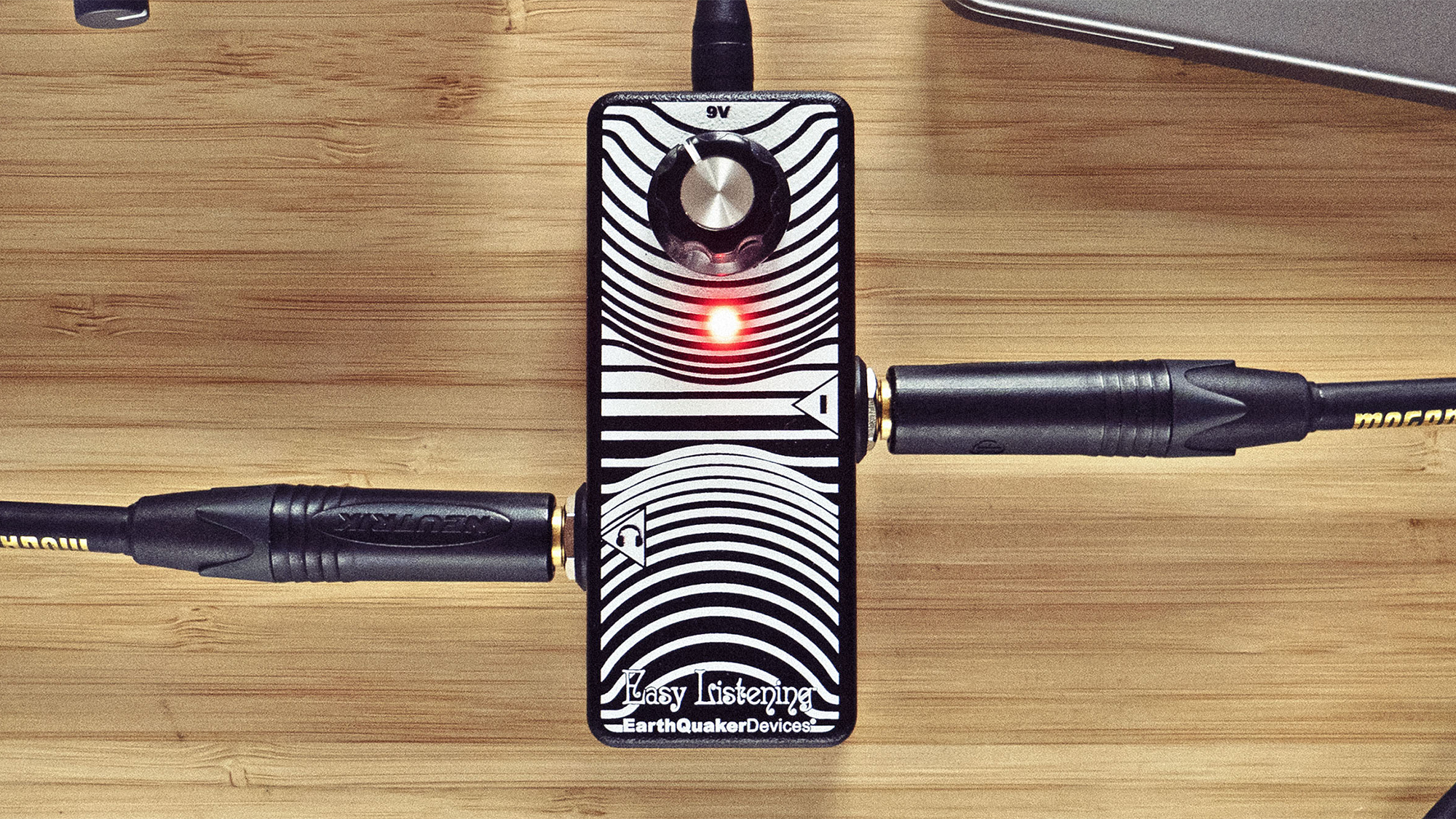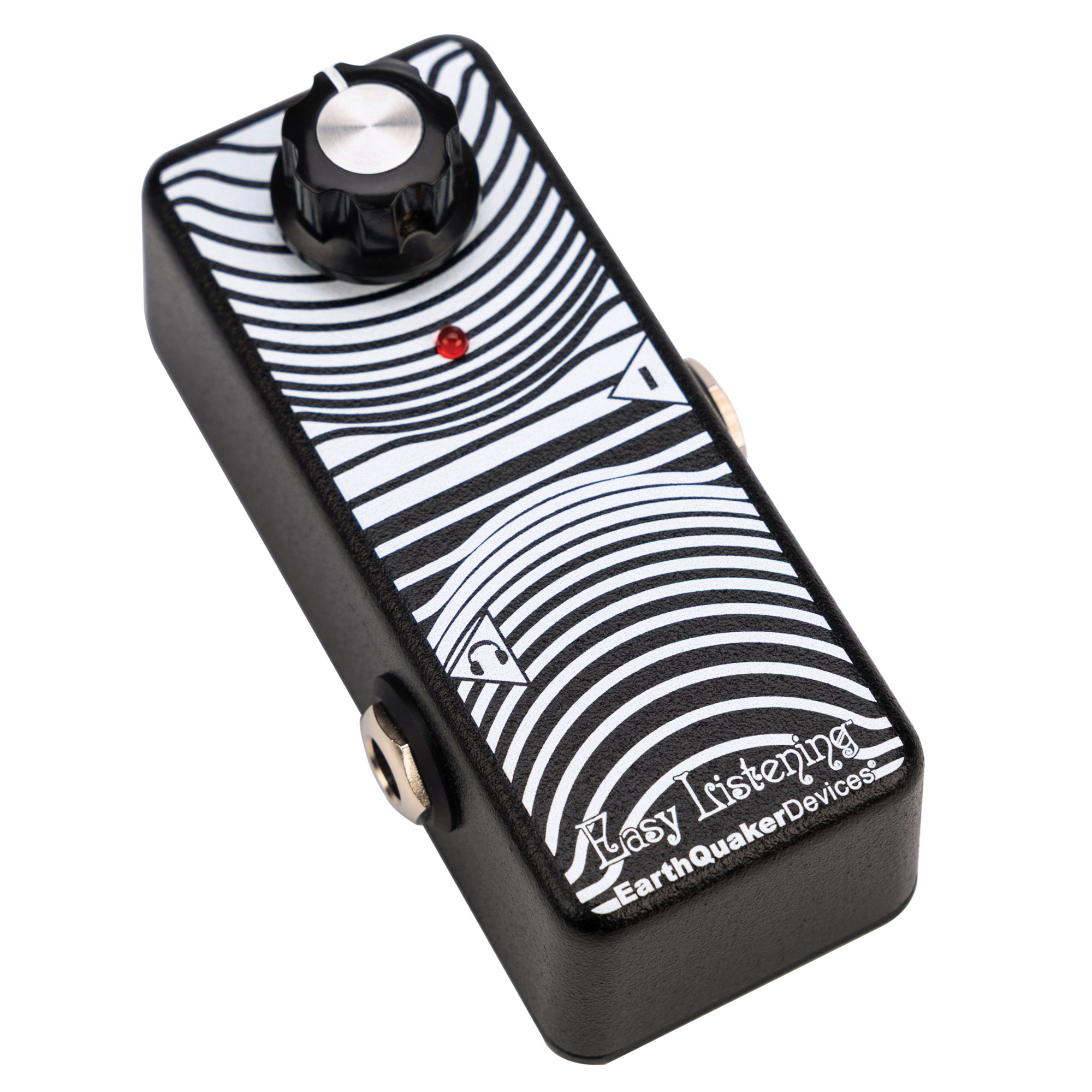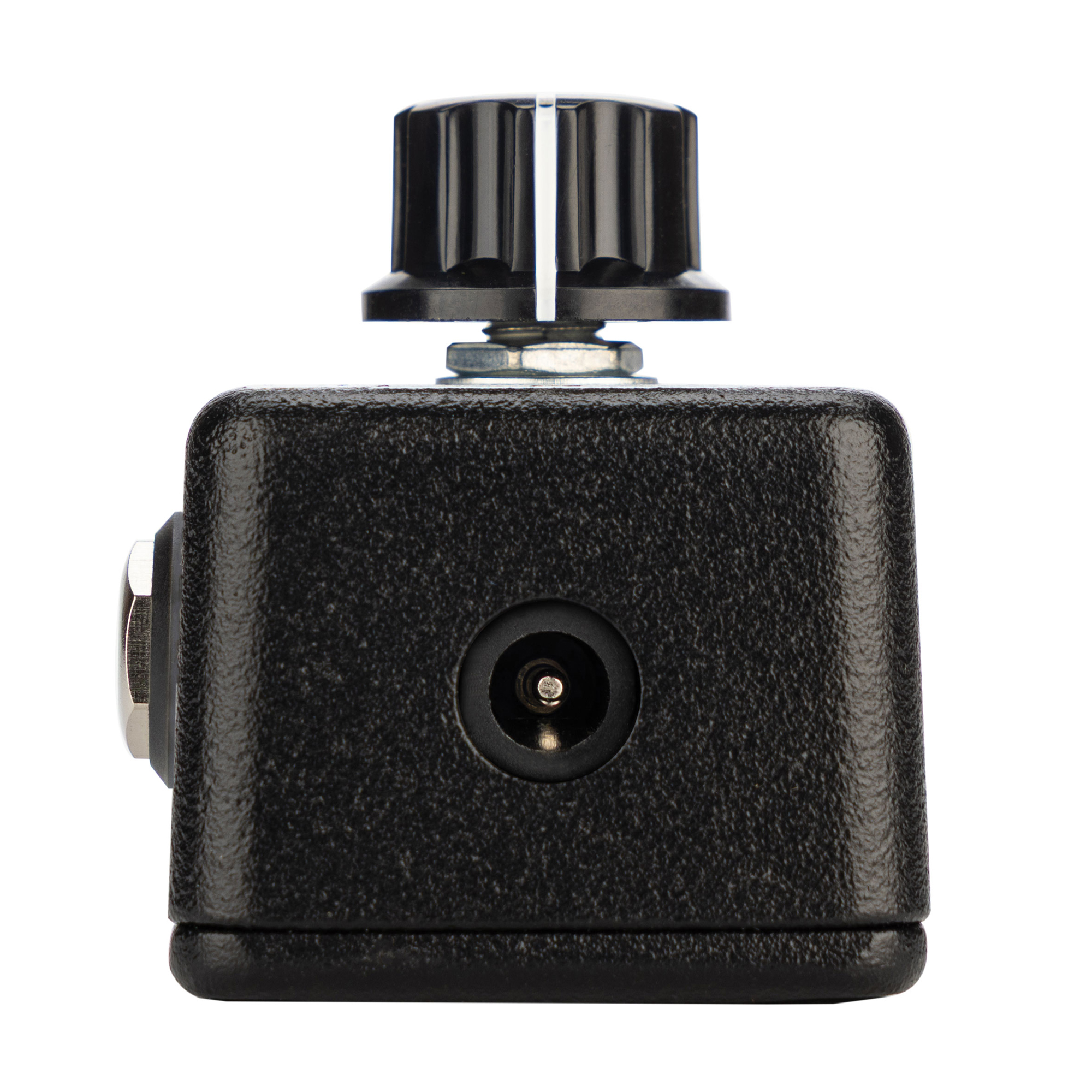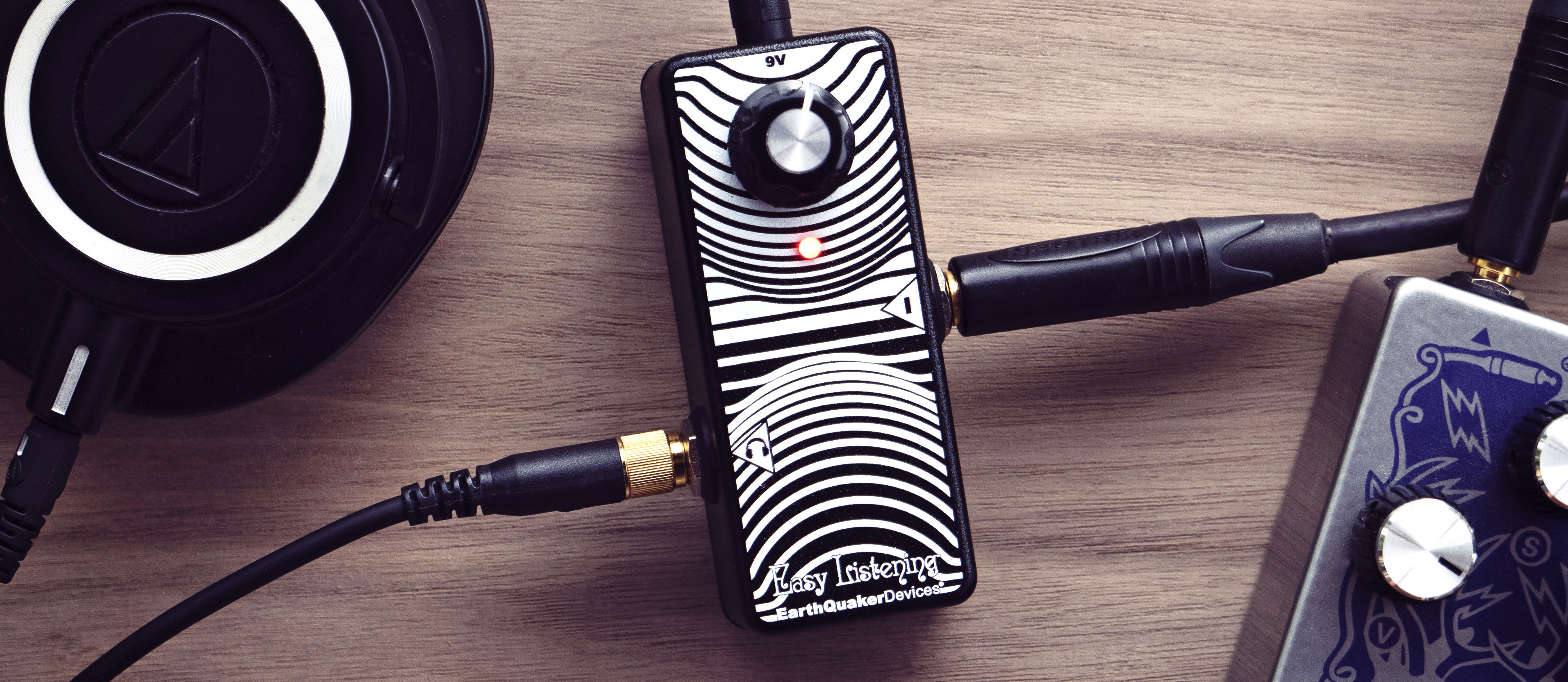GuitarPlayer Verdict
EarthQuaker Devices’ Easy Listening pedal is a minimalist analog amp simulator that captures the tone and feel of a 1965 Fender Deluxe combo in a tiny, single-knob enclosure. Designed for direct recording or headphone practice, it delivers warm, amp-like immediacy without digital modeling or menus. And while it lacks EQ and gain controls, it handles pedals naturally and functions like a classic “pedal-platform” amp—simple, musical, and impressively authentic for its size and price.
Pros
- +
An affordable, compact, and well-designed take on one of the most popular guitar-amp sounds of all time.
Cons
- -
None as intended, although some simple form of basic voicing might be handy.
You can trust Guitar Player.
Along with their many more complex, labyrinthine and occasionally dark and twisted effects pedals, EarthQuaker Devices not long ago unveiled a line of Utility Pedals that deliver simple routing, mixing and buffering functions at pocket-friendly prices. The latest addition, the Easy Listening pedal, retains the simplicity of the range while offering what I’d call a greater depth of purpose.
Despite having just a single (and unlabeled) volume knob and one input and output on its miniature 3.65 by 1.5 by 1.25–inch enclosure, the Easy Listening is an all-in-one analog amp simulator, designed to replicate the familiar tone of a 1965 Fender Deluxe combo, speaker and all.
EQD bills this little box as both the ideal late-night practice solution for electric guitar players and a dead-simple recording tool. You plug a guitar and any desired effects pedals in on one side, connect a set of headphones, or run D.I. to a recording interface into your DAW from the other, and Bob’s your uncle: You get rich, round, clear tone reminiscent of the most popular 1x12 combo of all time.
I’m not saying that Easy Listening is superior to these super computers, but I am saying that it has more of an immediate sound.”
— Jamie Stillman
In discussing the impetus for the design, EQD founder, president and head designer Jamie Stillman told me, “My main goal was just to make a small and affordable analog headphone amp for our demo boards, but I’m personally not a huge fan of the do-it-all multi-effects and modeling amplifiers that some people have gravitated towards. Even the best modelers cannot replace the immediacy of an amplifier. There is always some element of space they try to impart on the signal.
“I’ve always felt that layering guitar parts with a modeling amplifier starts to sound hollow when the tracks stack up, like they are missing samples and the added ‘space’ is never quite aligned right. I’m not saying that Easy Listening is superior to these super computers, but I am saying that it has more of an immediate sound.
“It’s more-in-your-face, without the elements of an imagined space cluttering everything up. I’m also not a menu diver. Nothing drives me crazier than having to sit and dial up a bunch of parameters when all I’d rather be doing is playing guitar with what little free time I have.”

Keen-eyed readers will have already noted that the Easy Listening provides no means to EQ, gain stage or perform other sonic tweaking — and that’s the idea. It’s intended to replicate the sound of a black-panel Deluxe combo speaker and all, before the point of clipping, at its most universally appealing tone settings, with a single knob to govern the output volume.
All the latest guitar news, interviews, lessons, reviews, deals and more, direct to your inbox!
That’s it. Connect headphones with a 1/4-inch stereo plug to the output and it sums both sides to the mono signal; or, connect a standard guitar cord to a single channel of your interface or a TRS cable with splitter at the other end to two multiple-mono channels for tracking to your DAW.
It’s intended to replicate the sound of a black-panel Deluxe combo speaker and all, before the point of clipping, at its most universally appealing tone settings.
— Dave Hunter
Obviously, capturing the tone of one of the world’s most desirable vintage combos in a pocket-sized box must have had its challenges. So did Stillman employ any complex analog-modeling algorithms or mystical tone-emulating techniques?
“Nope. I didn’t even use the schematic of the amp,” he tells GP with a laugh. “I just know that sound. I’ve been using that amp during development for years and I like the response it gives. I also use a Kemper with a model of the ’65 on my bench for headphone listening, so over the years I feel like I’ve learned what I do and don’t like about the models, too.
“I just tried to get as close as I could to the sound I am used to hearing while using as few parts as humanly possible so I could fit it in a small package and not take up a bunch of pedalboard real estate.”



I tested the Easy Listening with a Fender Telecaster and a Gibson Les Paul, using a selection of pedals between them, and found plenty of utility indeed in this simple headphone-jam and home-recording tool. The unit reacted well to a Wampler Tumnus Deluxe, an Ibanez TS10 Tube Screamer and an EQD Hoof fuzz, as well as a selection of reverb, delay and modulation pedals used in front of it, proving much the pedal equivalent of the “pedal platform” amp that has become popular in recent years.
It makes sense to have the gain preset to the shy side of clipping, since you’ll get that from anything you stack in front of it. While the overall EQ of the pedal is also very well-judged, however, I’d find something like a simple two- or three-way voicing switch handy, but add a little more high-end sparkle or low-end thump now and then. But that’s just a personal thing, and not so much a fault with the design, which is intentionally minimalist.
All in all, the Easy Listening easily justifies its name and is likely one of the most broadly appealing all-round “amp” tones I’d expect to encounter at this price. It’s also an extremely handy member of the toolbox by any measure. One might argue that it doesn’t sound exactly like a vintage ’65 Deluxe, but we might also reply “which ’65 Deluxe?” I’d say it’s close enough for rock and roll, and if the real thing, better reissues, and more complex digital modeling solutions arguably come closer, well, they all cost a lot more than $99.
SPECIFICATIONS
CONTACT Earthquakerdevices.com
PRICE $99 street
CONTROLS Volume
FEATURES Input, headphone/DI output, center-negative 9V input (no space for internal battery)
SIZE 3.65"x1.5"x1.25"
ASSEMBLED USA
PRO An affordable, compact, and well-designed take on one of the most popular guitar-amp sounds of all time.
CON None as intended, although some simple form of basic voicing might be handy.
Dave Hunter is a writer and consulting editor for Guitar Player magazine. His prolific output as author includes Fender 75 Years, The Guitar Amp Handbook, The British Amp Invasion, Ultimate Star Guitars, Guitar Effects Pedals, The Guitar Pickup Handbook, The Fender Telecaster and several other titles. Hunter is a former editor of The Guitar Magazine (UK), and a contributor to Vintage Guitar, Premier Guitar, The Connoisseur and other publications. A contributing essayist to the United States Library of Congress National Recording Preservation Board’s Permanent Archive, he lives in Kittery, ME, with his wife and their two children and fronts the bands A Different Engine and The Stereo Field.



